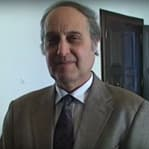Membrane Separations, Membrane Filtrations, Pervaporation, and Modeling of Membrane Separation
A special issue of Membranes (ISSN 2077-0375). This special issue belongs to the section "Membrane Processing and Engineering".
Deadline for manuscript submissions: closed (20 October 2020) | Viewed by 25515
Special Issue Editor
Interests: membrane separations; membrane filtrations; pervaporation; modeling of pervaporation; combination of pervaporation with other separation methods such as distillation
Special Issues, Collections and Topics in MDPI journals
Special Issue Information
Dear Colleagues,
Membrane separation methods have been conquering newer and newer areas, where they find successful applications. In spite of this, classical membrane filtration is a mature technology that is still under development to improve its attractive features. New membranes continually appear on the market offering better and better solutions. Pervaporation, a relatively new area of membrane separation, gains profit from such developments and finds new application areas. At present, the different membrane separation alternatives are so developed that they are competing with each other, such as membrane filtration and pervaporation.
The introduction of hybrid separation alternatives, where different separation methods are combined such as distillation and pervaporation, offer special and powerful separation options which could not even be imagined without their combination. The hybrid separation alternatives strengthen the need for reliable modeling of membrane separations. More accurate models are needed even by professional flowsheeting simulators, where they have already found the beginning of their application.
This Special Issue on “Membrane Separations, Membrane Filtrations, Pervaporation, and Modeling of Membrane Separation” of the journal Membranes seeks contributions to assess the state-of-the-art and future developments in the field of these areas. Scientific contributions are welcome that deal with the introduction of successful both scientific and industrial applications of membrane separations. General ideas and new, preferably thermodynamic-based models are also welcome in this Special Issue which can be applied even in professional flowsheeting simulators. The modeling and comparison of hybrid separation methods are also welcome in the journal Membranes. Authors are invited to submit their latest research results or successful applications. Both original papers and reviews are welcome.
Prof. Dr. Peter Mizsey
Guest Editor
Manuscript Submission Information
Manuscripts should be submitted online at www.mdpi.com by registering and logging in to this website. Once you are registered, click here to go to the submission form. Manuscripts can be submitted until the deadline. All submissions that pass pre-check are peer-reviewed. Accepted papers will be published continuously in the journal (as soon as accepted) and will be listed together on the special issue website. Research articles, review articles as well as short communications are invited. For planned papers, a title and short abstract (about 100 words) can be sent to the Editorial Office for announcement on this website.
Submitted manuscripts should not have been published previously, nor be under consideration for publication elsewhere (except conference proceedings papers). All manuscripts are thoroughly refereed through a single-blind peer-review process. A guide for authors and other relevant information for submission of manuscripts is available on the Instructions for Authors page. Membranes is an international peer-reviewed open access monthly journal published by MDPI.
Please visit the Instructions for Authors page before submitting a manuscript. The Article Processing Charge (APC) for publication in this open access journal is 2200 CHF (Swiss Francs). Submitted papers should be well formatted and use good English. Authors may use MDPI's English editing service prior to publication or during author revisions.
Keywords
- membrane separations
- membrane filtrations
- pervaporation
- modeling of membrane separation
Benefits of Publishing in a Special Issue
- Ease of navigation: Grouping papers by topic helps scholars navigate broad scope journals more efficiently.
- Greater discoverability: Special Issues support the reach and impact of scientific research. Articles in Special Issues are more discoverable and cited more frequently.
- Expansion of research network: Special Issues facilitate connections among authors, fostering scientific collaborations.
- External promotion: Articles in Special Issues are often promoted through the journal's social media, increasing their visibility.
- e-Book format: Special Issues with more than 10 articles can be published as dedicated e-books, ensuring wide and rapid dissemination.
Further information on MDPI's Special Issue policies can be found here.






